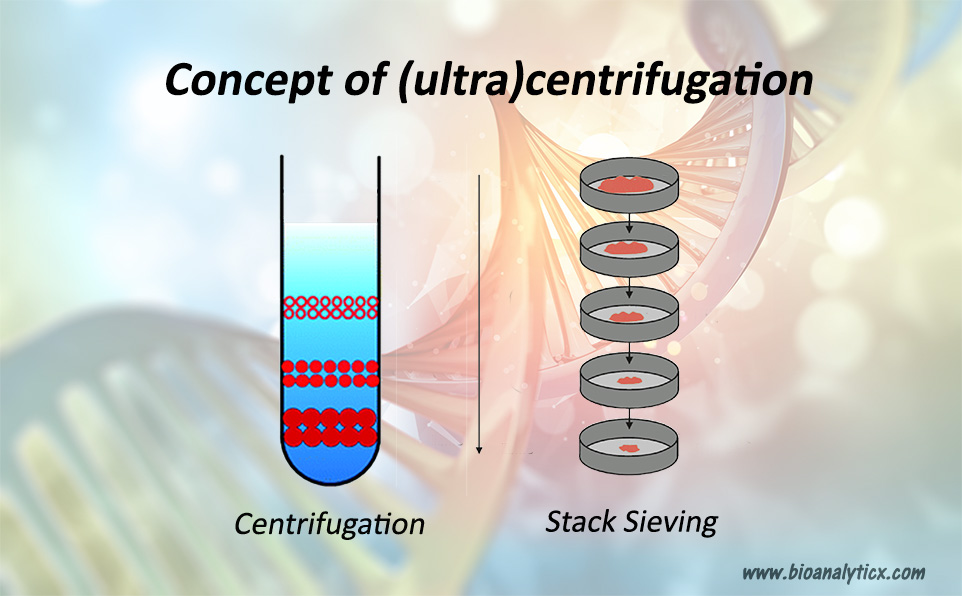
The (gradient) ultracentrifugation technique is often described in the medical/virology literature regarding virus separation, isolation, and purification. However, its use is misunderstood and misrepresented for virus isolation. In short, the technique is a separation technique but cannot isolate viruses, as explained below.
Centrifugation is a simple technique for separating components in a liquid solution. For example, if one shakes some sand particles with water in a test tube and leaves it on the table, the sand particles will quickly settle at the bottom of the test tube. However, if the particles are small and light, they may not settle at the bottom of the tubes quickly and often remain suspended in water. Using centrifugation machines, the test tubes are spun to pull the material down with centrifugal force. Therefore, it is another technique for separating, like filtering the content (solid/liquid) in a flask or test tube.
The ultracentrifugation technique uses extremely high spinning speeds and gravitational force (g) in thousands of multiples. Such a force pulls the extremely small particles, even macromolecules such as proteins, DNA/RNA, etc., towards the bottom of the tubes.
A variation of this technique, i.e., gradient ultracentrifugation, is conducted where the aqueous phase is replaced by stacking different concentrations of sugar (sucrose) solutions in the test (centrifuge) tubes. Applying the test sample (e.g., treated swab sample) at the top and then spinning the tubes results in spreading particles across the tubes based on particles’ size and density. The band (position) where the specific types of particles settle is pipetted out and used for identification and characterization.
Conceptually, ultracentrifugation is similar to stack sieving, in which particles of different sizes are separated and collected in pans with different sieve or hole sizes. The critical thing to remember is that it is a separation technique but cannot identify or characterize the nature of the particles it separates.
From the virus isolation perspective, gradient ultracentrifugation’s separation or spreading ability does not isolate the virus particles but potentially collects in a band reflecting a certain size and density particle range. Therefore, it still provides a mixture of the original sample, perhaps less dense and more homogenous than the applied sample. Due to the heterogeneity in biological particles, this differential centrifugation suffers from contamination and poor recoveries. The particles’ mass, density, and shape dictate the position of the (particles) band.
However, knowing which band or section of the tubes contains the virus requires a calibration of the centrifugation step before its use. This calibration step can only be done using the isolated and purified virus specimen. But, such a virus specimen is not available. Therefore, one cannot determine which band will contain the presumed virus.
In reality, the centrifugation currently divides the original swab specimen (gunk) into smaller portions, not knowing if the virus exists or which portion (band) contains it. Thus, nothing gets isolated. Therefore, virus isolation using ultracentrifugation is a false claim and shows a lack of understanding of the scientific method/technique.
Please obtain a copy of Helpful Notes today to learn about the relevant science for medicines.
